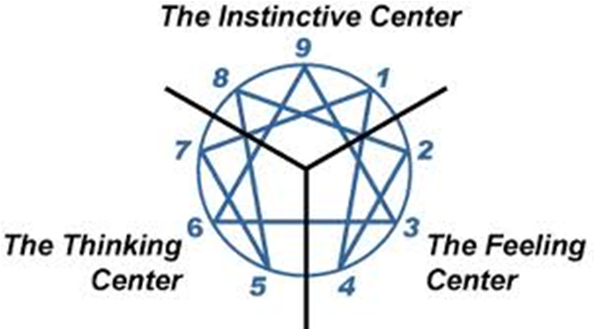 This post describes how the Enneagram can be used as a tool to help you build rapport with new acquaintances. Whereas the previous posts described mirroring physical appearance and physical behavior, this post uses the Enneagram to understand motivational styles. The Enneagram describes 9 different styles, each with its own set of motivations. The idea is to understand your own style, identify the style of your new acquaintance, and adjust your style to better match or mirror that of your acquaintance. In other words, if you know the things that are important to your acquaintance and you assure that person that those things are equally important to you, you will put your acquaintance at ease, thereby allowing you to build rapport with that person.
This post describes how the Enneagram can be used as a tool to help you build rapport with new acquaintances. Whereas the previous posts described mirroring physical appearance and physical behavior, this post uses the Enneagram to understand motivational styles. The Enneagram describes 9 different styles, each with its own set of motivations. The idea is to understand your own style, identify the style of your new acquaintance, and adjust your style to better match or mirror that of your acquaintance. In other words, if you know the things that are important to your acquaintance and you assure that person that those things are equally important to you, you will put your acquaintance at ease, thereby allowing you to build rapport with that person.
The Enneagram is a rich and powerful tool for understanding yourself, those around you, and how to better get along with others. I strongly recommend that every program manager study this tool and keep it at the top of their toolkit. The Enneagram is too complex to discuss in detail here. For an easy, fun way to explore the Enneagram, I recommend the book aptly named The Enneagram Made Easy by Renee Baron & Elizabeth Wagele. The authors summarize the nine types as follows:
Style 1 – The Perfectionist
Style 2 – The Helper
Style 3 – The Achiever
Style 4 – The Romantic
Style 5 – The Observer
Style 6 – The Questioner
Style 7 – The Adventurer
Style 8 – The Asserter
Style 9 – The Peacemaker
Each style has its own perspective and tends to emphasize and prioritize different things. For instance, Style 1 focuses on getting-it-right, whatever “it” may be. Understanding that your acquaintance is a Style 1 person and knowing the importance to them of getting-it-right, you can reflect that understanding which will put them at ease and allow you to begin building a trusting relationship. (Of course, you also need to follow through in deed as well as word.)
When we encounter a person that is of a similar style to our own, then building rapport can be quite easy. For instance, my dominant style is 6, and when I meet another Style 6 person, I find I fall right into easy conversation. On the other hand, when I encounter a person with a style that is very different than my own, I have to work consciously at modulating my 6-ness and to focus on emphasizing those things that are important to my new acquaintance.
Yes, some styles naturally get along better with other styles. That said, you do not have a choice over the style of a new acquaintance. The only choice you have is to understand how you can tune your own style to better match theirs. The Enneagram provides you with a powerful framework to help you achieve this. Used in combination with mirroring physical appearance, body position, and speech styles, the Enneagram provides you with a powerful tool to mirror motivational styles of emphasis, focus and priority. All of these used in combination, along with generous listening, will help you put new acquaintances at ease, build rapport and, ultimately, establish trusting relationships.

The author is this blog, Matt Schlegel, is elaborating on the concept of using the Enneagram to build rapport and trust with your teammates on this blog:
https://evolutionaryteams.com/category/team-effectiveness/enneagram/building-rapport-enneagram/
You can also find out more about Matt Schlegel’s book on team effectiveness here:
https://evolutionaryteams.com/make-your-life-even-better-professionally-and-personally/